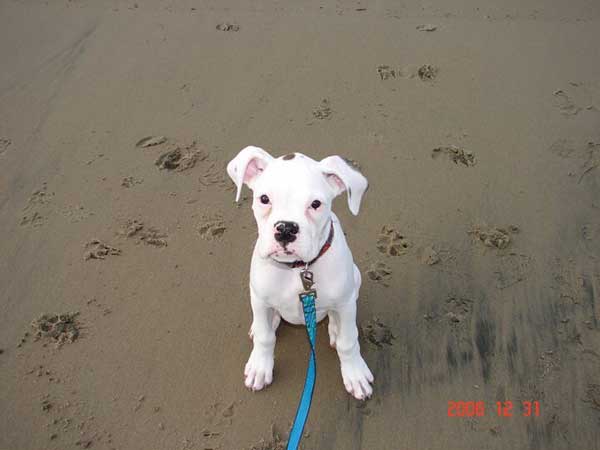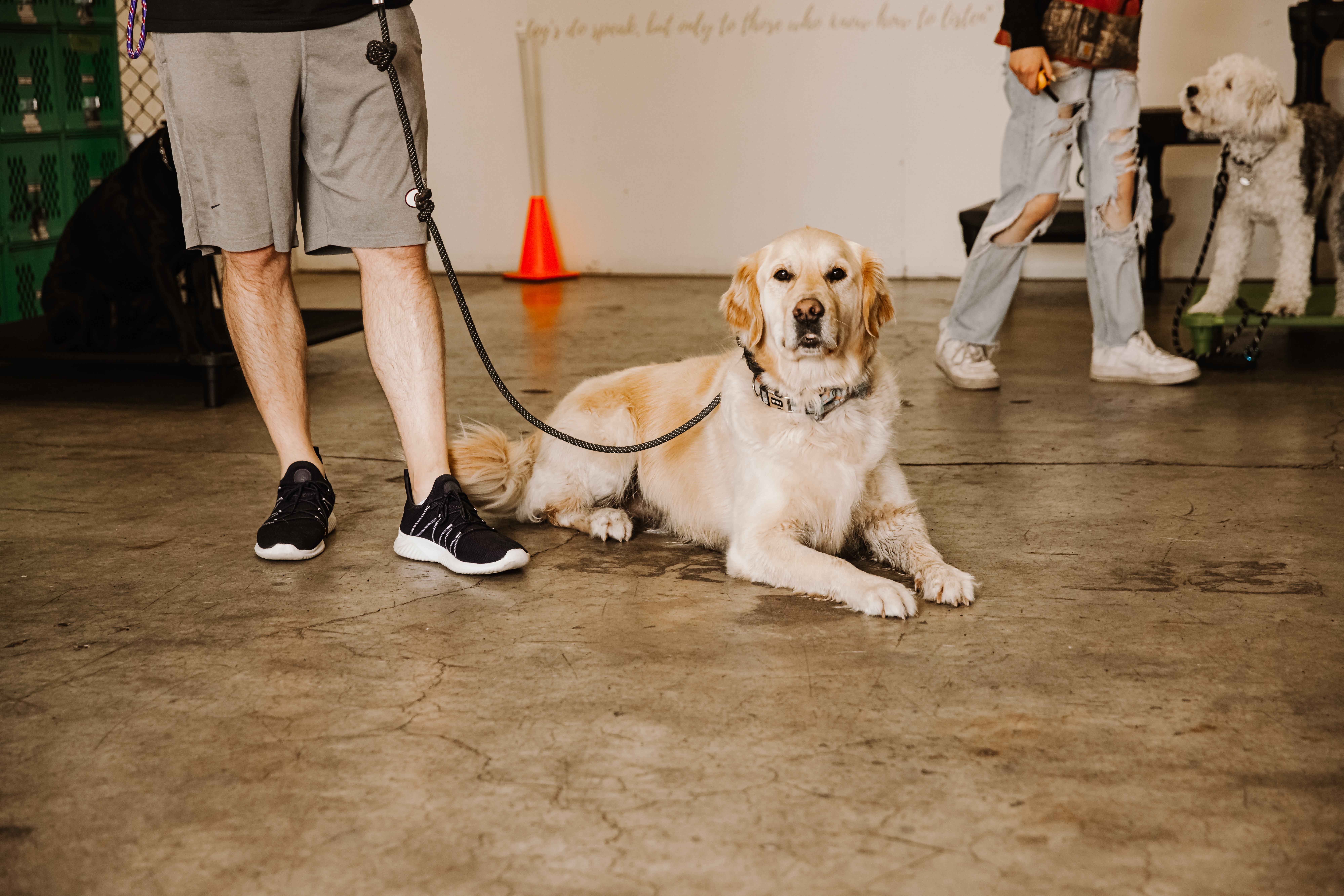Introduction
All dogs can learn
As a seasoned dog trainer, I am a firm believer that all dogs can learn new ways, and the first step on that journey is reactive dog training. I’ve seen it all: the leash pulling, the manic barking, the unruly jumping. However, with the right mindset and tools, anyone can take charge and lead their canine companions to better behavior. This isn’t some hocus-pocus. It’s about understanding you are the solution along with the proper tools to encourage better behavior. And yes, it involves a lot of patience and controlling your energy, but the results are worth every moment spent.
The Power of Learned Behavior
Let’s delve into the fascinating world of learned behavior, shall we? In the canine realm, learned behavior is the crux of understanding your dog’s actions. Ever wonder why your canine does a jig every time someone rings the doorbell? Or why a leisurely walk turns into a tug-of-war contest? It’s not because your dog is a born performer or has ambitions of joining a canine weightlifting league. Rather, it’s all about conditioned behavior.
Your dog’s antics, whether adorable or exasperating, are essentially responses they’ve learned from past experiences. The doorbell ring might signal a visitor, which to your dog means attention and pats. The leash pulling? Maybe it’s been a successful strategy to quicken the pace to that alluring fire hydrant.
But fear not, my fellow dog-lovers! Just as these behaviors were learned, they can be unlearned or modified. And no, it doesn’t involve you carrying a bag of rocks or a pocket full of treats. Quite the opposite – we’re talking about encouraging desired behavior through the power of balanced reinforcement, steadfast patience, and unwavering consistency. Trust me, this triumvirate can work wonders in reshaping your dog’s behavior and making you both happier in the long run. So, strap in, s and get ready for an adventurous journey of teaching your dog some new, more desirable behaviors.
Behavior Modification – It’s Not About Control, But Guidance
Let’s bust a myth right out of the gate – behavior modification in reactive dog training isn’t about wrestling for control or establishing dominance over your dog. Instead, think of it as confidently steering your canine companion towards making better decisions. You taught them inadvertently to do these undesirable behaviors, now it’s time to teach proper behaviors. You’re not micromanaging their every move but guiding them to understand that certain actions can lead to uncomfortable outcomes.
Take leash walking, for instance. When your canine decides to impersonate a sled dog and turns your casual stroll into a high-stakes tug of war, resist the urge to engage in a strength contest. Instead, try putting on a proper walking collar, not a harness, and teaching your dog what your expectations really are, no need to be frustrated or feel disillusioned. Trust me, it won’t be long before your dog catches on that their yanking just puts a halt to the journey, not expedite it. This exercise isn’t about control but rather about leading their high energy towards developing some much-needed impulse control. And voila, your evening walks suddenly turn from exhausting to exhilarating!
Of course, it may take a few (or a few dozen) attempts before your dog gets the hang of it. Behavior modification is a marathon, not a sprint, so don’t expect a ‘Eureka’ moment right off the bat. There will be ups and downs, and there will be moments when your patience wears thin. But hang in there, remember to breathe, and keep the end goal in mind. After all, nothing good comes easy, and that includes well-behaved, leash-walking dogs.
And, as always, don’t forget the importance of balanced reinforcement. A well-timed “good boy” or “good girl” accompanied by an earned reward can work wonders in reinforcing the behavior you want. After all, who doesn’t love a little praise and a tasty reward for a job well done?
So, the next time you’re out for a walk and your dog starts to pull, remember, it’s not a battle of wills but an opportunity to lead your dog towards a better choice. And the best part? You’re not just teaching them leash manners, you’re building better leadership and trust – the cornerstones of a happy and harmonious relationship with your four-legged friend.
The Role of Obedience in Reactive Dog Training
When it comes to reactive dog training, obedience is the show’s star. But before we move forward, let’s clear something up. Obedience isn’t about barking orders and expecting your dog to jump to it like a drill sergeant. No, it’s about opening up a line of communication between you and your dog.
Picture this: You and your canine are speaking the same language. You say ‘sit’, and Fido plonks his fluffy butt on the ground. You say ‘come’, and Fido saunters over like a royal subject to his queen. It’s about getting your dog to understand what you’re asking of them, and in return, they get the joy of pleasing you. It’s a win-win situation!
But don’t be fooled into thinking that obedience is all work and no play. Teaching commands like ‘sit’, ‘stay’, ‘come’, and ‘leave it’ is like sending your dog to the doggy gym. It gives their brain a workout and improves their impulse control. It’s like mental yoga for your dog, improving their behavioral flexibility and overall temperament.
And let’s not forget the role obedience plays in leash walking. Imagine a leisure stroll without the war of tug or a park visit without the fear of your dog making a break for it. Obedience training is the golden key to these peaceful outings. And trust me, having a dog that understands and follows your commands is as satisfying as a hot cup of coffee on a cold morning – comforting and invigorating!
So, don your training cap, arm yourself with treats and patience, and embark on this exciting journey of teaching your dog the language of obedience. Because let’s face it, there’s nothing quite like the bond between a human and a dog who truly understand each other. And remember, as with any good conversation, it’s as much about listening as it is about speaking.
Building a Strong Relationship and Trust
Now, let’s get down to the nitty-gritty of establishing a deep bond and trust with your canine companion. Embarking on the journey of reactive dog training is a two-way street, with you playing the role of a calm and confident leader. But keep in mind, great leaders aren’t all about command and control; instead, they radiate reliability, patience, and consistency.
To build this unshakeable bond, you need to be as transparent as a glass window with your expectations. That means consistency is your new best friend! A clear and consistent message will help your dog understand what you want from them. And when they do manage to follow through – and trust me, they will – shower them with well-deserved rewards. Think belly rubs, cuddles, treats, and an enthusiastic “good job” that would make even the grumpiest cat crack a smile.
But hey, all work and no play makes Fido a dull dog. Ensure you’re spending quality time together including your rules, boundaries, and lots of games. This could be anything from a fun game of fetch, with a release command, a structured walk, or simply basking in the glow of a sunny afternoon together. These moments are the glue that bonds, the magic that transforms cohabitation into a lifelong friendship built on respect.
So remember, reactive dog training isn’t just about improving behavior, it’s also about deepening the bond you share with your dog. Think of it as laying the foundation of a relationship defined by mutual respect, understanding, and trust. It might not happen overnight, but with a dash of patience, a dollop of consistency, and a hearty helping of leadership, you’re sure to get there.
As you embark on this rewarding journey, always remember the four C’s of dog leadership – Confidence, Consistency, Calm, and Communication. With these by your side, you’ll not only have a well-behaved companion but a loyal friend who trusts and respects you. And isn’t that what we all strive for in a furry friend? After all, the bond between a human and their dog is a special one, filled with countless moments of joy, understanding, and mutual respect. So tighten those laces, grab your leash, and step into the exciting world of reactive dog training. Happy training!
.





